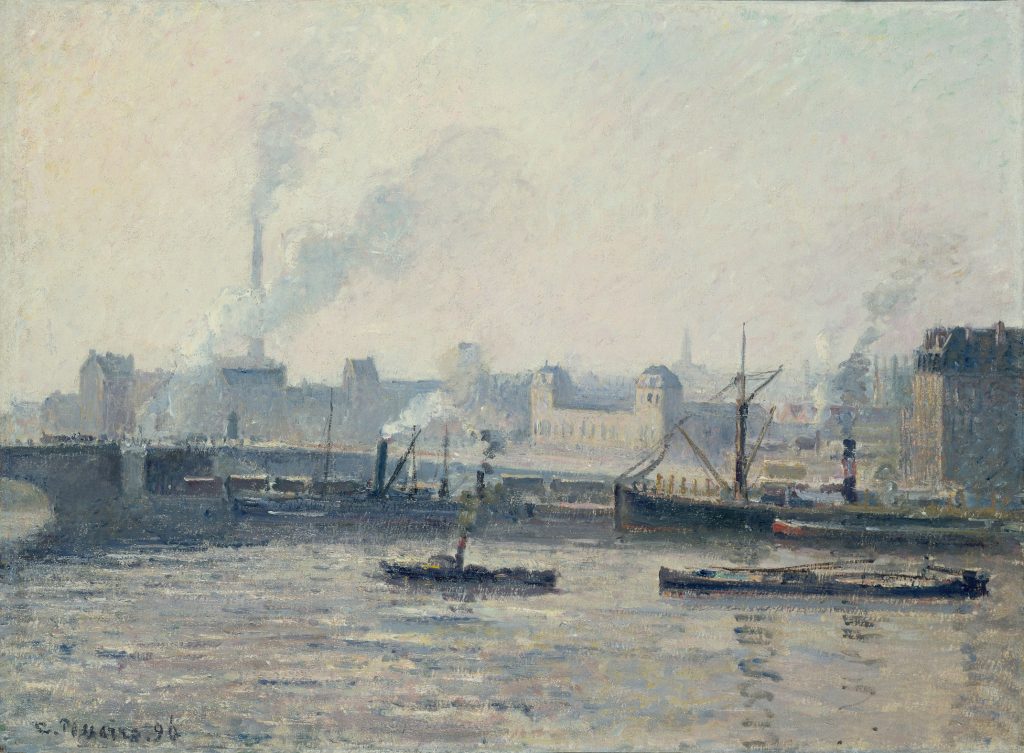The Saint-Sever Bridge, Rouen: Mist (work of art)
Artwork Info
Key Ideas
- This is an impressionist painting. This art style focuses on color and form rather than realistic-looking scenes.
- This is a cityscape of Rouen, France. The artist painted different views of the city’s bridges.
- Camille Pissarro was a Danish-French impressionist painter. He grew up in a Jewish family in the Danish West Indies.
- Anti-Semitism was increasing in France when Pissarro created this painting. He was rejected by some of his colleagues because of his Jewish background.
Learn More
This impressionist painting depicts a peaceful scene in Rouen, a city in northern France. The work was created at a time when there was a great deal of cultural and political conflict happening in France. Anti-Semitism was on the rise. Many conservative French people were hostile toward Jewish people. They accused them of oppressing French society.
Camille Pissarro was a French impressionist and neo-impressionist artist. He was born in the Danish West Indies to Jewish parents. Throughout his life he was part of various cultural groups without fully belonging to a specific community. Some of Pissarro’s colleagues avoided him because of his Jewish ancestry and politics. He was rejected by well-known French impressionist artists like Edgar Degas and Pierre-Auguste Renoir.
Pissarro traveled to Rouen several times and created many impressionist paintings of the city’s bridges. Impressionism became a popular style of painting in the 1860s. Impressionist artists focused more on color and form than realistic-looking scenes. They aimed to capture the essence of a subject in their paintings.
Additional Resources
Resources for Teachers
- Read the artist’s biography.
- Read an article about the Dreyfus Affair.
- Read an essay about impressionism.
Resources for Students
- View another painting of a bridge by Pissarro.
- View an online gallery of the artist’s work and read his biography.
- Read an article about impressionism.

